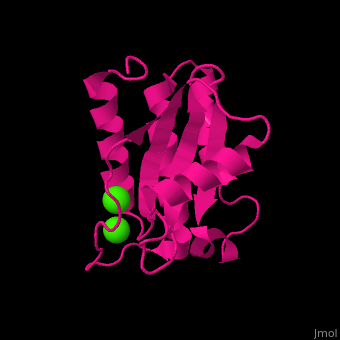Function
Acid phosphatase (ACP, EC number 3.1.3.2) is an enzyme which removes phosphate from other molecules during digestion. It catalyzes the conversion of orthophosphoric monoester and H2O to alcohol and phosphoric acid. The enzyme is most effective in acidic environment, hence its name.[1]
- Prostatic ACP (PSAP) is produced by the prostate[2].
- Purple ACP (PAP) or tartrate-resistant ACP contains a dinuclear Fe center and their oxidized form in solution maintains a purple color[3].
- Histidine ACP (HAP) catalyzes the transfer of phosphoryl group using an active-site histidine[4]
- N-acetylneuraminic ACP is involved in the biosynthesis of N-acetylneuraminate.
- Lysophosphatidic ACP is involved in signal transduction and storage lipid synthesis[5].
- BA42 belongs to the TPM protein family from Pfam. The TPM domain family is named after the three founding proteins TLP18.3, Psb32 and MOLO-1. TPM domains have a characteristic fold composed of α helices (3+3[6] or 2+3[7]) flanking four central β strands. The TPM fold has not been found in other protein domains to date. TPM was previously referred to as "DUF477" and "Repair_PSII".
ACP contains 3 classes:
- Class A is nonspecific and catalyses the dephospho rylation of orthophosphoric monoesters and transphosphorylation
.
- Class B dephosphorylates several phosphoric monsters like 3" and 5'- nucleotides
.
- Class C is nonspecific and does not modify lipids
.
In plants, the TPM domain-containing proteins TLP18.3 and Psb32 that have been implicated in the photosystem II (PSII) repair cycle. It may be involved in the regulation of synthesis/degradation of the D1 protein of the PSII core and in the assembly of PSII monomers into dimers in the grana stacks.[8]
In the model nematode C. elegans, the MOLO-1 protein is an auxiliary subunit that positively modulates the gating of levamisole-sensitive acetylcholine receptors.[9]
in Antarctic bacterium protein BA42 (PDB code 4oa3).[10]
Disease
PSAP is found in increased amounts in patients who have prostate cancer.
Relevance
PSAP was used as a prostate cancer marker before the develpement of prostate specific antigen (PSA) as one.
Structural Highlights
in E. coli acid phosphatase.[11]
3D Structures of acid phosphatase
Acid phosphatase 3D structures

